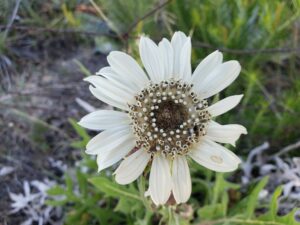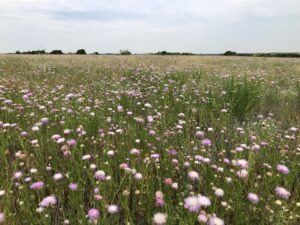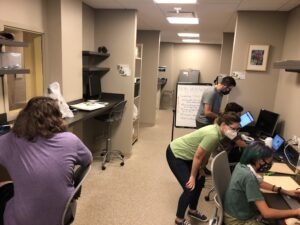In our “Hidden Treasures” series, Special Collections Librarian Alyssa B. Young features notable works in the BRIT rare book collection.
The work of Dr. Eula Whitehouse spreads tentacles throughout BRIT. Our herbarium contains over 500 specimens she collected, our library houses six of her publications, and the Eula Whitehouse Collection in the BRIT Archives documents her life’s work. Much like the names Mahler or Shinners, Whitehouse’s name is omnipresent since she’s integral to the core of BRIT as an institution. To celebrate Women’s History Month, we want to tell the story of this remarkable woman.
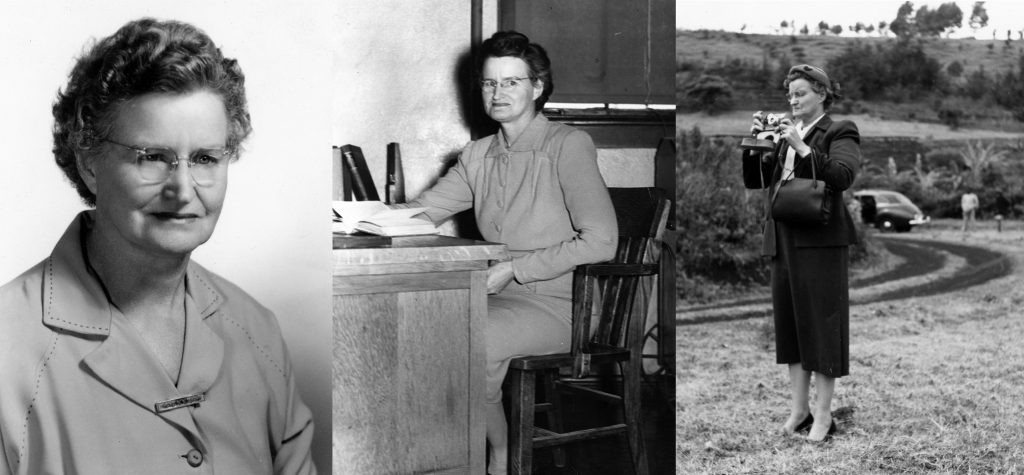
Eula Whitehouse was born in Cleburne, Texas, on August 1, 1892. She attended University of Texas in Austin, where she received a B.A. in 1918, M.S. in 1931, and a Ph.D. in 1939. Such educational accomplishments are impressive today, but a woman receiving and excelling in an academic or scientific field at her time is exceedingly rare. Dr. Whitehouse is among the 429 women in America to receive a Ph.D. between 1939-1940, which accounts for 0.0007% of the population of women in the United States (National Center for Education Statistics and 1940 Census Records). She quickly proved herself not only as an exceptional scientist but also a wonderful scientific illustrator. Dr. Whitehouse was listed in Who’s Who of American Women (1959) and American Men of Science (1944), seemingly because there was no publication devoted to honoring women in science.
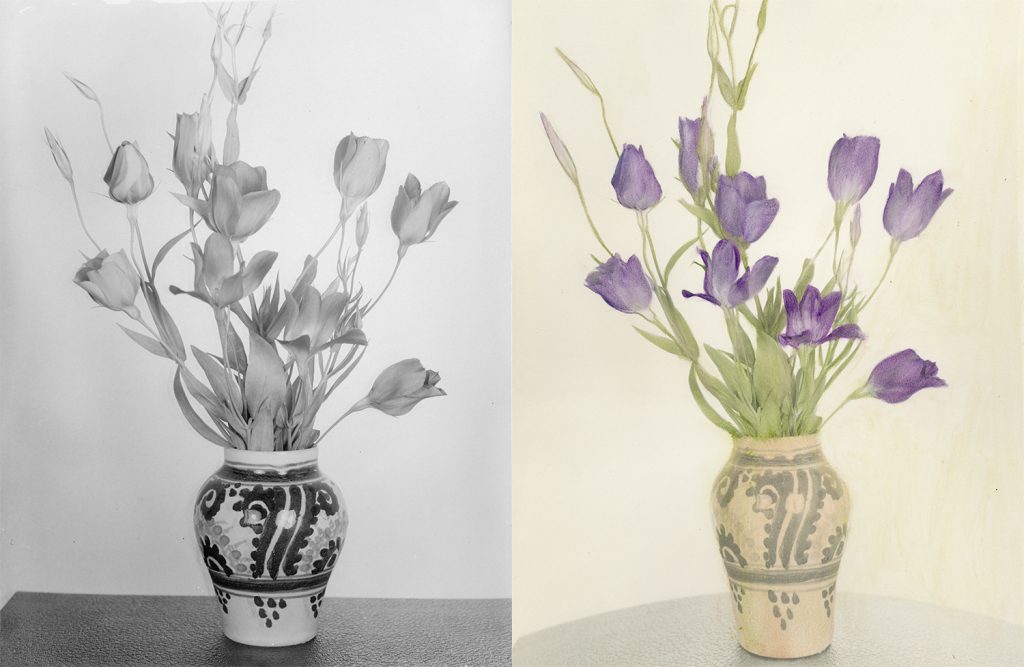
In 1936, Dr. Whitehouse authored and illustrated one of the first books devoted to Texas wildflowers, Texas Flowers in Natural Colors. This work was released to high acclaim and remains a favorite among many Texas botanists.
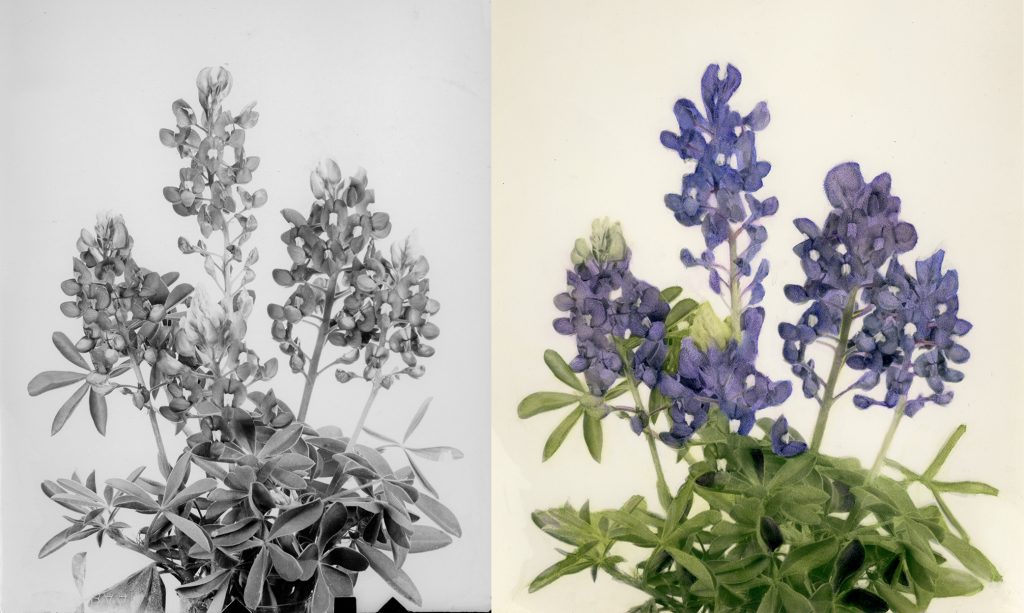
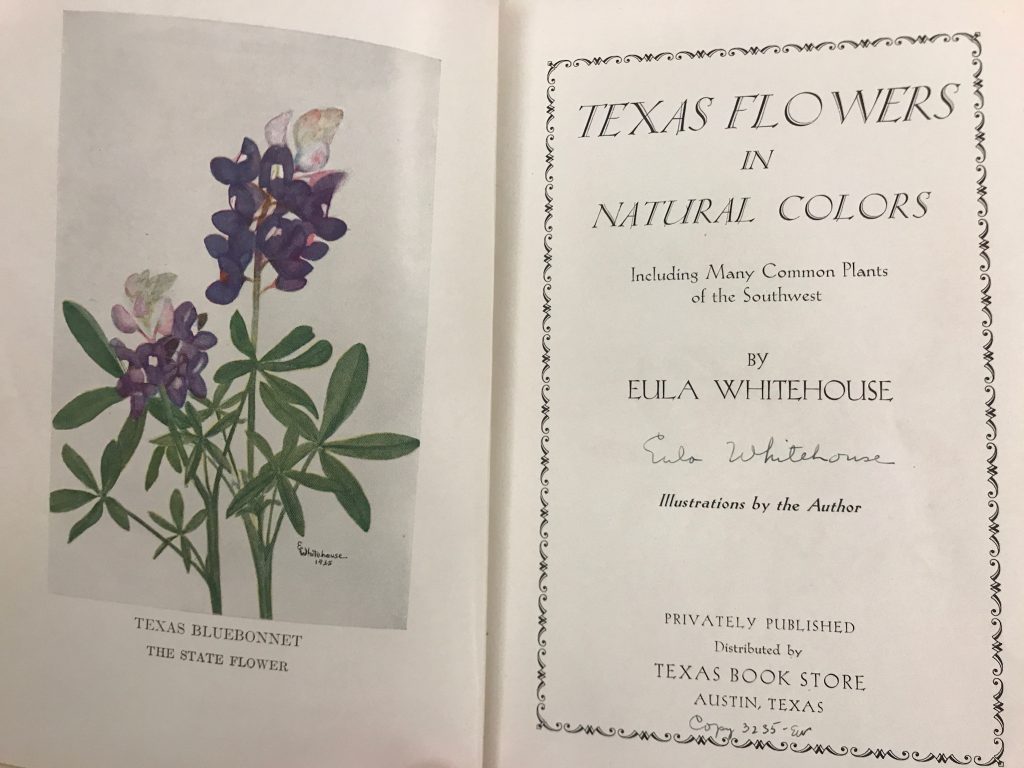
The Eula Whitehouse Archives Collection at BRIT contains documents outlining her professional career. The collection demonstrates her supreme appreciation for plant morphology. Throughout her career, Dr. Whitehouse exhibited an eye for science and botany. She excelled in describing plants’ physical characteristics for scientific value as well as illustrating the beauty in botany.
Her interest in wildflowers developed during a trip from New Mexico to California, during which she gazed out the train window and marveled at the beautifully diverse landscape. This inspired her to begin studying botany on her return to graduate school, and she took her new passion very seriously. Her master’s thesis, titled “Ecology of Enchanted Rock Vegetation,” and doctoral dissertation, “A Study of the Annual Phlox Species,” were highly lauded by academic advisers. Both titles are available in the BRIT library (contact library@brit.org to set up an appointment for access)
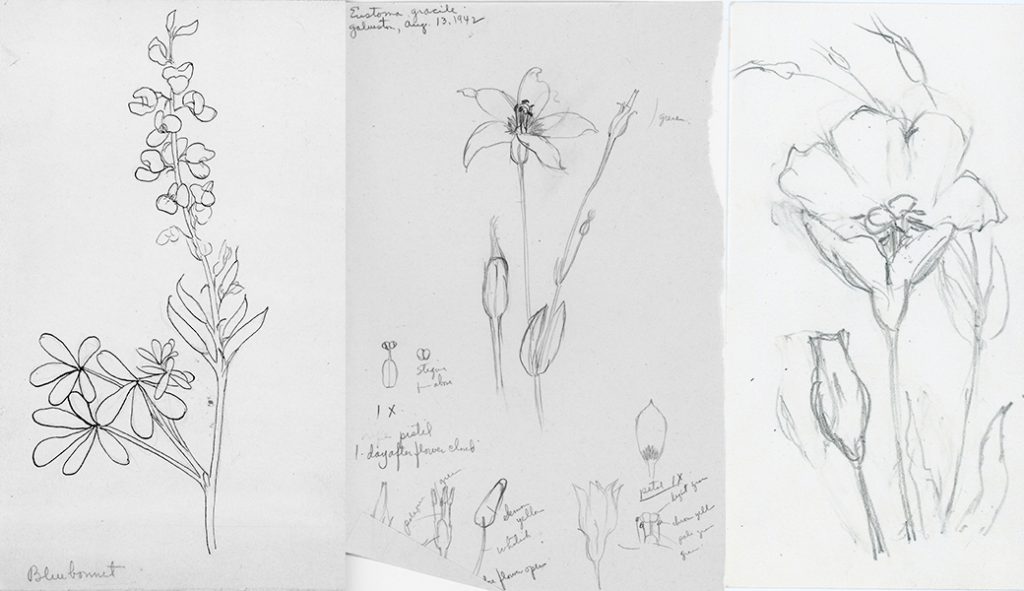
She held jobs throughout North and Central Texas, working as an instructor at the University of Texas College of Mines (1931-1934), Curator of Botany and Zoology at Texas Memorial Museum at Austin (1938-1943), and a schoolteacher in Electra (1944-1946).
In 1946, Dr. Whitehouse was hired as a technical assistant at the SMU herbarium under Dr. Lloyd Shinners. She was appointed Curator of Cryptogams in 1954, a position she held until retiring in 1958. During this time she traveled extensively. She collected mosses in Africa in 1953, botanized on an around-the-world trip in 1954, traveled and collected in Hawaii in 1955, and studied mosses and liverworts at the University of Washington in 1956. Her collections include specimens from Australia, New Zealand, Cyprus, India, Singapore, Fiji, and Mexico.
During her retirement, Dr. Whitehouse developed a passion for birdwatching and became a founding member of the Dallas Audubon Society, for which she served as president and vice-president. She also held memberships in American Society of Plant Taxonomy, International Society of Plant Taxonomists, Botanical Society of America, American Bryological Society, American Fern Society, American Forestry Association, Texas Academy of Science, Southwestern Association of Naturalists, Torrey Botanical Club, Texas Fine Arts, Sigma XI, and Sigma Delta Epsilon
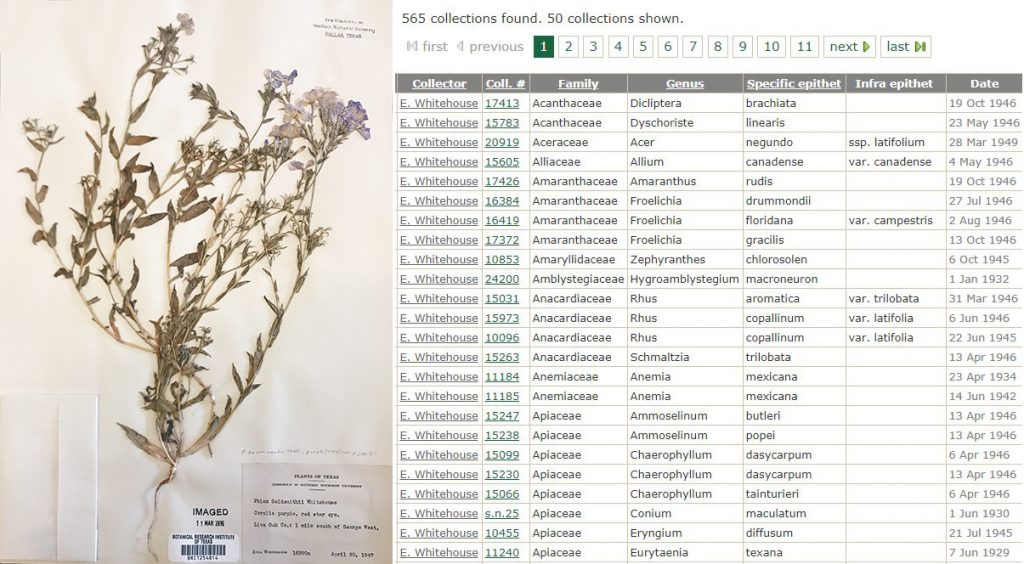
Right: Records of the 565 collections deposited to the SMU herbarium, which now resides at BRIT.
Dr. Eula Whitehouse died at the age of 82 on September 6, 1974, and is buried in her hometown of Cleburne, Texas. Three years later, in 1987, BRIT was incorporated as a non-profit organization to house the SMU herbarium of 450,000 specimens and 75,000 botanical books; Dr. Whitehouse is responsible for thousands of the specimens and books that serve as the core of BRIT. With the SMU collection, BRIT gained one of the best collections of Texas bryophytes, including the vouchers for the The Mosses of Texas (Whitehouse & McAllister 1954).
We are proud that Dr. Eula Whitehouse is ingrained in the collections that serve as the foundation of BRIT. In many ways, she is an example of an “ideal” botanist, a well-rounded scientist with a contagious passion and legacy of substance. She inspired an appreciation for botany through her artistic talents, built substantial scientific collections with her decades of explorations, and contributed heavily to scientific research through numerous publications. And most importantly, she promoted the importance of plant life to the public, amateur botanists, and scientists alike.
Although she didn’t leave behind direct descendants, she left a strong legacy. Her publications, specimens, and research documents are still in use today and will continue to be so for generations to come. She was a devoted and dedicated scientist at a time when societal expectations would have her be anything but, and she worked hard to prove her merit. Dr. Whitehouse paved the way for women in the scientific community, which means her impact now reaches far beyond her own work.
Selected Publications
McAllister, F., P.Y. Hoglund, & E. Whitehouse. 1925. Catalogue of Texas Hepaticae: With Notes on the Habitat and Distribution.
McAllister, F., P.Y. Hoglund, & E. Whitehouse. 1930. Catalogue of Texas Hepaticae. Texas Acad. Sci. 31:35-58.
Whitehouse, E. 1931. Ecology of Enchanted Rock vegetation. MS Thesis, Univ. of Texas, Austin.
McAllister, F., P.Y. Hoglund, & E. Whitehouse. 1932. Catalogue of Texas Hepaticae. Transactions Texas Acad. Sci. 15:39–58.
Whitehouse, E. 1933. Plant succession on central Texas granite. Ecology 14(4):391-405.
Whitehouse, E. 1934. The distribution of some Texas lichens. The Bryologist 37(3):53-55.
Whitehouse, E. 1935. Notes on Texas phloxes. Bull. Torrey Botanical Club 381-386.
Whitehouse, E. 1936. Texas Flowers in Natural Colors. Privately published. Austin, Texas.
Whitehouse, E. 1939. A study of the annual Phlox species. Doctoral dissertation, Univ. of Texas, Austin.
Whitehouse, E. 1945. Annual Phlox species. American Midland Naturalist 34(2):388-401.
Whitehouse, E. 1952. Bryology in Texas: 1. Mosses (Musci). Field & Laboratory 20(1):9-17.
Whitehouse, E. 1952. Collecting Mosses in East-Central Africa. Field & Laboratory 21:59-74.
Whitehouse, E., & F. McAllister. 1954. The mosses of Texas. A catalogue with annotations. The Bryologist 57(2):63-146.
Whitehouse, E. 1954. The Mosses of Texas. Foreword. The Bryologist 57(2):53-63.
Whitehouse, E. 1955. Additions to the hepatic flora of Texas. Mitt. Thuring. Bot. Gesell 1:231-235.
Whitehouse, E. 1962. Common fall flowers of the coastal bend of Texas. Rob and Bessie Welder Wildlife Foundation.



